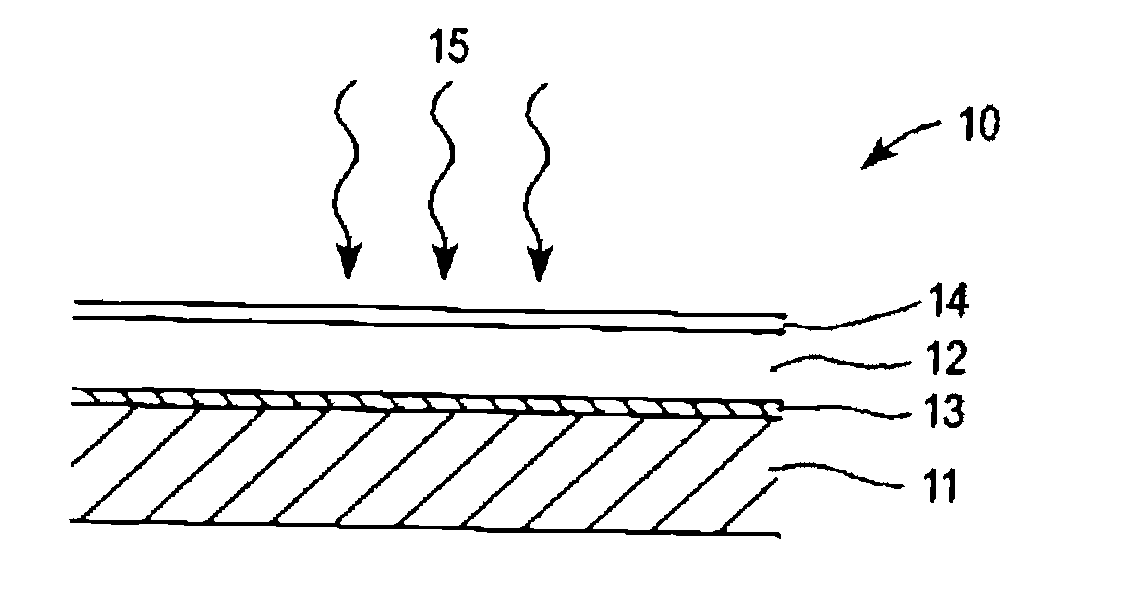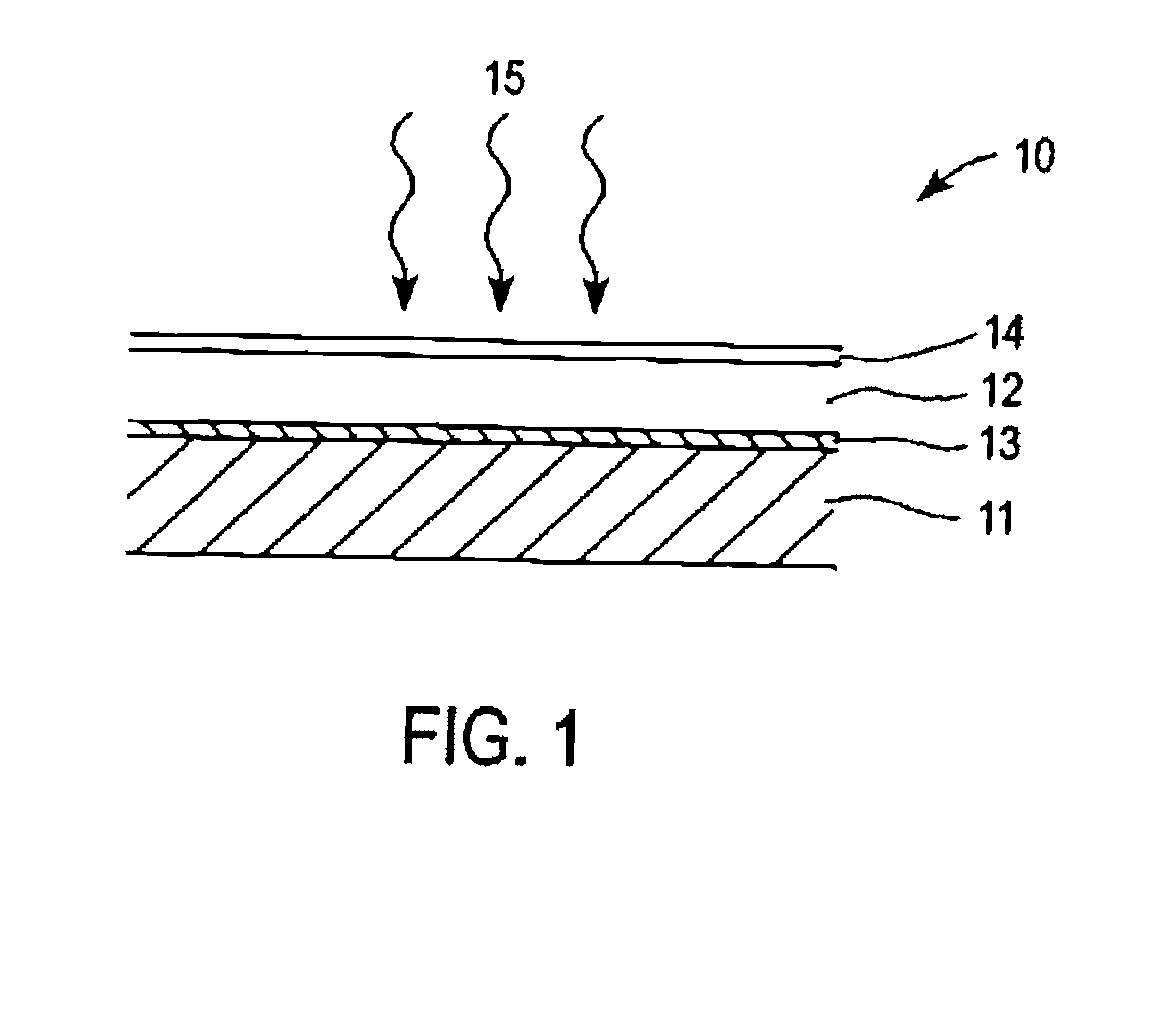Technique for doping compound layers used in solar cell fabrication
a technology of solar cells and compound layers, which is applied in the direction of electrical equipment, basic electric elements, semiconductor devices, etc., can solve the problems of low material non-uniformity of cigs layers, and high equipment cost, so as to achieve low materials utilization and high equipment cost
- Summary
- Abstract
- Description
- Claims
- Application Information
AI Technical Summary
Benefits of technology
Problems solved by technology
Method used
Image
Examples
Embodiment Construction
[0018] There are various ways of growing Group IBIIIAVIA compound films such as Cu(In,Ga)(S,Se)2 compound layers utilizing wet techniques such as electrodeposition. In one approach all the group IB and Group IIIA elements of the compound, i.e. Cu, In and Ga are electroplated on a base in the form of discrete layers forming a stacked precursor layer with a structure such as Cu / Ga / In, or Cu / In / Ga, or Cu / Ga / Cu / In, or Cu / In / Cu / Ga, etc. This precursor layer is then reacted with at least one of S and Se to form the Cu(In,Ga)(Se,S)2 compound layer. It is also possible to use a hybrid approach where only some of the constituents of the compound are electrodeposited. For example, one can deposit Cu by PVD and Ga and In by electrodeposition to form a precursor layer comprising Cu, In and Ga and then react this precursor layer with at least one of Se and S to form the compound. The present invention achieves controlled doping of the compound layer by including at least one alkali metal in the ...
PUM
| Property | Measurement | Unit |
|---|---|---|
| molar ratio | aaaaa | aaaaa |
| temperature | aaaaa | aaaaa |
| concentration | aaaaa | aaaaa |
Abstract
Description
Claims
Application Information
 Login to View More
Login to View More - R&D
- Intellectual Property
- Life Sciences
- Materials
- Tech Scout
- Unparalleled Data Quality
- Higher Quality Content
- 60% Fewer Hallucinations
Browse by: Latest US Patents, China's latest patents, Technical Efficacy Thesaurus, Application Domain, Technology Topic, Popular Technical Reports.
© 2025 PatSnap. All rights reserved.Legal|Privacy policy|Modern Slavery Act Transparency Statement|Sitemap|About US| Contact US: help@patsnap.com


